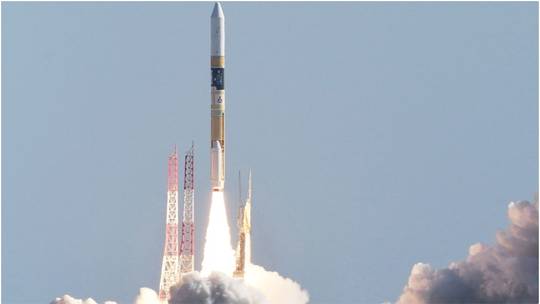World
Launch of the Japanese moon sniper lander

In the early days of 2024, the expedition hopes to land on the moon.
By launching a lunar exploration vehicle atop a homegrown rocket, the Japan Aerospace Exploration Agency (JAXA) has achieved its goal of making a successful landing on the Moon by next February.
The Smart Lander for Investigating Moon (SLIM) was launched by an H-IIA rocket on Thursday from Japan’s Tanegashima Space Centre and will travel to the lunar surface over the course of many months.
the rocket “flew as planned” during Thursday’s launch, according to JAXA, despite the $100 million mission’s rough start, which included three postponements last month due to bad weather.
The SLIM has been dubbed the “Moon sniper” because the space agency claims it will do a “pinpoint landing” with it, aiming to be just 100 metres from its target location. JAXA stated the project would offer useful information and experience for upcoming space exploration, including landings on “resource-scarce planets.”
According to JAXA’s mission description, “by developing the SLIM lander, humans will achieve a qualitative shift towards being able to land where we want and not just where it is easy to land, as had been the case, as had been the case previously.”
If all goes as planned, the robotic SLIM lander will travel a considerable distance while using little fuel before landing inside the Shioli impact crater, an approximately 1,000-foot-wide basin on the near side of the Moon. Several small probes that will aid in monitoring the state of the landing site are among the sensors and other equipment carried by the ship.
The same H-IIA rocket also launched the lander and the X-Ray Imaging and Spectroscopy Mission, or XRISM, a space telescope constructed by JAXA, NASA, and the European Space Agency. The gadget might potentially offer fresh insight on the nature of dark matter, the structure of the early cosmos, and the birth of galaxies, among other topics, according to researchers. They hope it will contribute to advancements in the field of X-ray astronomy.
The successful launch comes after two prior unsuccessful lunar landing efforts by Japan during the past year. One vehicle lost communication with JAXA in November, and another crashed into the Moon in April.
The accomplishment also comes after Moscow’s Luna-25 mission’s aborted effort and India’s first trip to the lunar surface in late August, which made India the fourth nation to ever carry out a landing. Roscosmos, the Russian space agency, claimed that a problem with the craft’s engine was the cause of the failed landing, but expressed optimism for further Moon missions.
